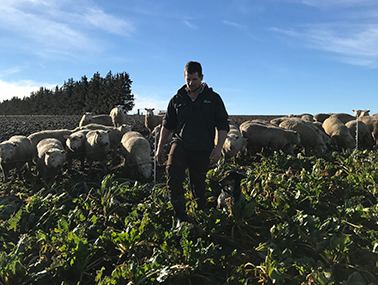Selenium for animal health, growth and productivity
Small inputs can make a big difference to your farm results.
Selenium (Se) is a micronutrient that is essential for animals. In many areas of New Zealand, improving selenium levels can improve stock fertility and growth rates. In a dairy context it can optimise milk production.
West Southland farmer Hayden McKenzie is sold on the value of selenium to his intensive sheep and beef business. “Things vary from year to year but our lambing rates are usually over 150%. Last year we did 160%. We also regularly achieve kill weights of 19kg, while the average around here is 18 to 18.5 kg.” In the sheep and beef business every bit extra makes a difference.
Since the family started applying selenium prills to their 220-hectare property in 1998, deficiency issues have not had a look in. “Younger animals - lambs and hoggets – get ill thrift if deficient and lambs can get white muscle disease. We haven’t noticed either since we started using selenium prills in our fertiliser.”
Assessing (and addressing) your selenium needs
Herbage tests are the only way to assess your pasture’s selenium content. If levels are below 0.03 mg Se/kg DM (below 30 micrograms/gm in your herbage test results) you may need to supply selenium to avoid deficiency issues in stock and take advantage of its performance and productivity benefits.
Increasing selenium levels through fertiliser is Hayden’s preferred approach. “I like using [selenium] prills. They’re a safe, easy and efficient way of delivering selenium and they work in well with my maintenance fertiliser programme. You hit two birds with one stone.”
Hayden usually applies 0.5 kg Se/ha with his maintenance fertiliser. “I try to get that on in early December so I know it’s present when we wean the lambs onto grass later that month. We also put 1 kg/ha into the fertiliser mix for our forage crop paddocks, so the ewes have a chance to get some over winter when their lambs are developing.”
Product performance
Ballance Selenium combines both fast and slow release forms of selenium to give pasture an initial lift and then sustain selenium levels over time. This gives you more flexibility with application timing, enabling you to spread it in spring or autumn.
For advice on herbage testing and managing your farm’s selenium and other micronutrient levels, talk to your local Ballance Nutrient Management Specialist.
